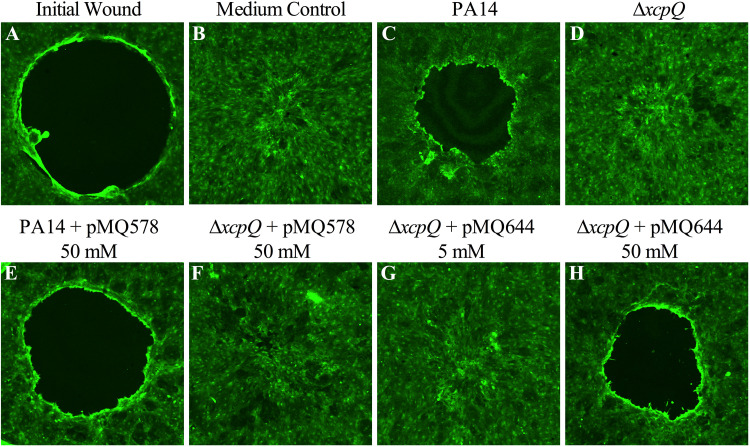FIG 9.
XcpQ is required for the inhibition of stratified corneal cell migration in vitro. Shown are representative images of cells stained with the vital stain Calcein AM and imaged by confocal microscopy. (A to C) A cell-free zone (black circle) in layers of a stratified human corneal cell line (A) closes rapidly when treated with LB medium and incubated for 24 h (B), but this migration is inhibited by filtrates from PA14 cultures grown in LB medium (C). (D) Filtrates from isogenic ΔxcpQ mutants were unable to impede cell migration. (E and F) d-Xylose (50 mM)-induced expression of gfp from pMQ578 did not alter the migration phenotypes of cells exposed to PA14 or ΔxcpQ mutant filtrates. (G and H) Culture filtrates from the ΔxcpQ mutant with the wild-type xcpQ gene on a plasmid (pMQ644) that had been grown in LB medium with 5 mM d-xylose were unable to inhibit cell migration (G), but those grown with 50 mM d-xylose were complemented for the cell migration inhibition-defective phenotype (H). All cultures were grown to stationary phase and were adjusted to an OD600 of 2 with fresh LB, and bacteria were removed by centrifugation and filtration.

